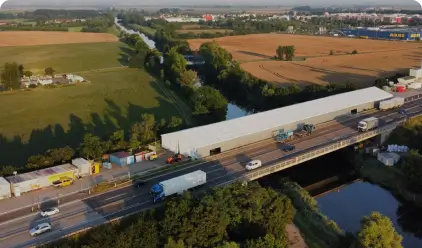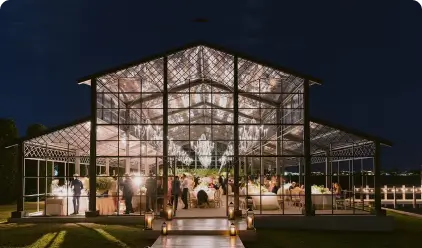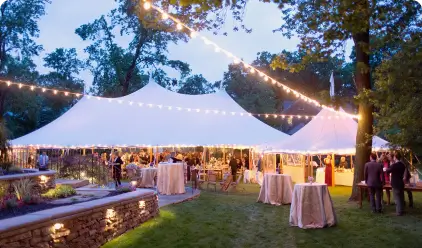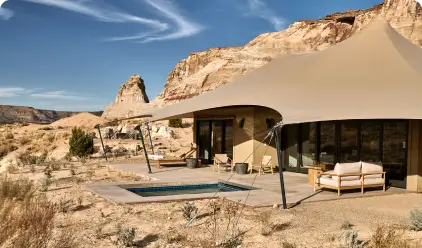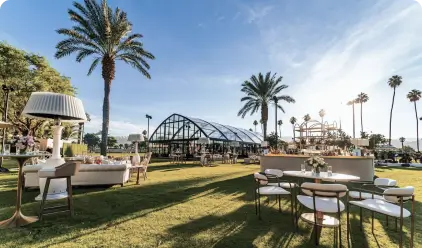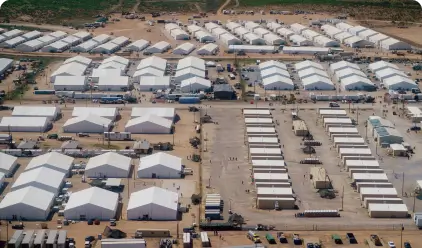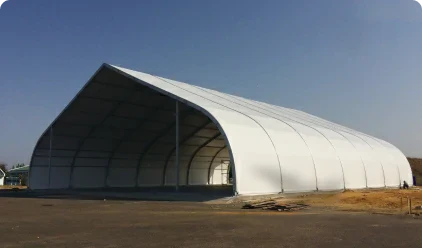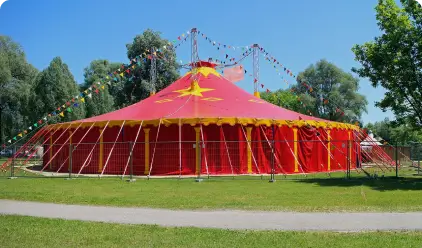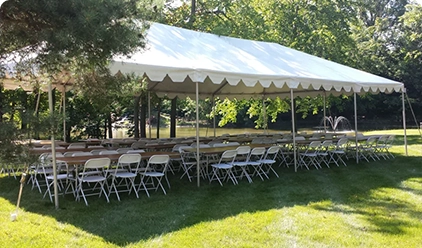Medieval Tent: What Is It and How to Choose One for Ren Faires
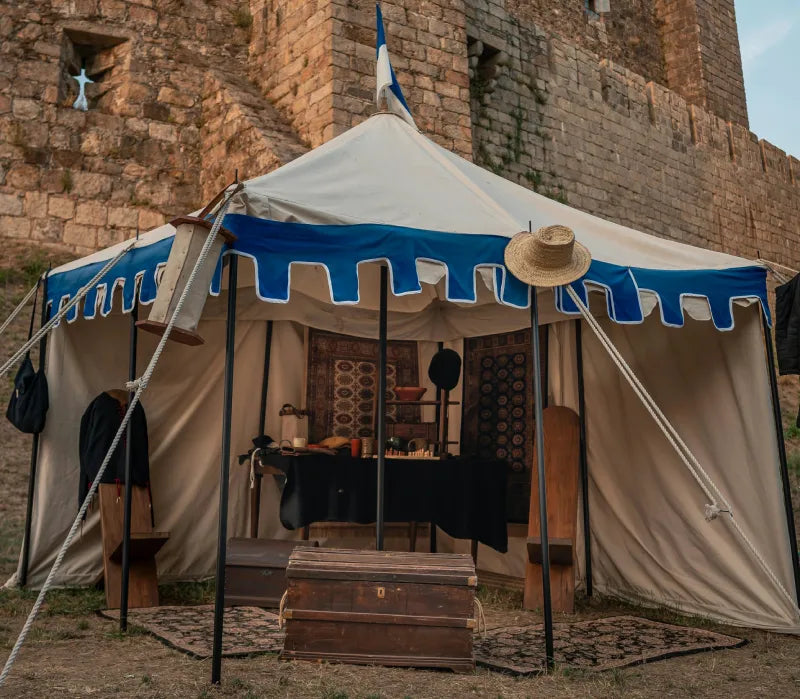
Stepping into any Renaissance festival grounds, the first structures to transport you back to 14th-century Europe are medieval tents. These aren't just functional shelters; they also serve as backdrop walls for merchant stalls and gathering points for costumed revellers.
Though rooted in the Middle Ages, modern medieval tents blend historical charm with contemporary practicality, making them essential for Renaissance festival enthusiasts.
But what exactly is a medieval tent? And how do you choose the right one for your next celebration? Let's dive in.
What Is a Medieval Tent?
In the Middle Ages, tents served not only as shelters from wind and rain, but also as symbols of status and mobile dwellings. Historically, these festival tents have served a variety of purposes. Armies relied on medieval war tents for command posts and soldier barracks, merchants used compact stalls as medieval market tents, and nobility commissioned elaborate pavilions for travel.
As time goes by, medieval tents have evolved for contemporary use, with Renaissance fairs (Ren fairs) being their most popular setting.
Modern versions retain the iconic shapes, like sloped roofs, billowing fabric, and earthy tones — but usually swap traditional materials for durable, weather-resistant alternatives. Whether you’re selling handcrafted jewelry, hosting a medieval feast, or camping overnight, a well-chosen medieval tent bridges the gap between history and comfort.
Types of Renaissance Faire Tents
Not all medieval tents are the same. The best option for you depends on what you need it for, whether that's a spacious display area, a cosy sleeping spot, or a grand focal point. Here are the four most common types of medieval tents for Renaissance fairs:
Frame Tent

Frame tents are a common sight at modern festivals. They feature a sturdy internal framework, typically made of lightweight, rust-resistant aluminium for added durability, which securely supports the fabric structure.
For a stronger medieval vibe, it's suggested to add sidewalls; these can be plain canvas or adorned with subtle motifs to mimic the linen or wool designs of historical tents, harking back to classic medieval styles.
This type of medieval period tent offers ample headroom and clear-span interiors with no obstructive centre poles, making them perfect for vendor booths with craft shelves or gathering spaces with seating. Their robust build can withstand strong winds, even on open festival fields, and they are easy to set up with a few people and no special tools.
For a durable option that balances medieval charm and modern practicality, frame tents are a solid choice.
Keder Tent

Keder tents are known for their standout modularity. Their unique keder rail interlocking system enables multiple tent units to connect, forming large, continuous spaces without any gaps.
This makes them ideal for groups camping together or merchants requiring additional booth space at Renaissance fairs. Their design often features high peaks and vertical walls, reminiscent of the grand pavilions of medieval nobility and keeping that historical charm alive.
Typically crafted from heavy-duty, PVC-coated polyester, they offer excellent weather protection, providing a modern take on traditional durability. Although assembly requires more hands, it is straightforward, and the result is an impressive, customisable setup.
Explore Keder tent for expansive, adaptable festival solutions.
Medieval Pavilion Tent
The medieval Pavilion Tent is the noble edition among medieval tents. With its soaring pointed roof and sweeping eaves, some even feature embroidered coats of arms or hanging tassels, instantly evoking the grandeur of noble banquet tents from days gone by.

Supported by a central pole and surrounding framework, its interior offers exceptionally spacious accommodations—perfect for hosting gatherings of over a dozen guests or serving as a central venue during celebrations.
If you're planning a medieval-themed gathering or seeking a striking photo spot for festivities, this tent naturally radiates authentic ambiance. Opt for deep green or burgundy hues to instantly immerse your guests in the period atmosphere.
Bell Tents

Bell Tents are the ultimate lightweight option. Round like little bells, they feature just one central pole and fold down small enough to fit in a backpack. One person can set one up in about half an hour.
This design actually served as a portable shelter for medieval travelers, and now it's perfect as a single or double camping tent. Though compact, the circular layout makes excellent use of space—easily accommodating a folding bed and small table.
Most are crafted from canvas with a vintage charm or PVC for waterproofing, and their relatively affordable price makes them perfect for first-time Ren Faire attendees or anyone seeking lightweight travel gear.
How to Choose the Right Tent for a Medieval Festival?
With so many types available, picking a medieval tent boils down to five key factors. Let’s break them down to help you find your perfect match:
Purpose of Use
Start by defining your main goal. Are you a merchant displaying wares? A performer needing a backstage area? Or a camper wanting a comfortable shelter? Your purpose dictates the tent’s size and type.
Vendors might prefer frame tents or Keder tents for their spacious, accessible interiors. Campers might lean toward bell tents for simplicity. Think about foot traffic, storage needs, and how much space you’ll require for activities. Getting the size right upfront prevents headaches later.
Material
The fabric and frame materials impact durability, weather resistance, and maintenance.
Common tent materials include canvas and PVC. Canvas is a traditional choice, offering a breathable and natural appearance.
However, it can be heavy, prone to mildew if not cared for, and less effective in heavy rain without treatment. PVC-coated polyester, relatively speaking, offers superior waterproofing and UV resistance. It’s easier to clean and generally more durable for frequent use.
For frame materials, wood might seem authentic but it’s bulky and can warp. Aluminum frames are lightweight, rust-resistant, and strong, making them a better modern alternative.
When comparing materials, PVC and aluminum often provide the best balance of authenticity and performance.
Portability and Setup
How easy is it to transport and pitch the tent? If you move between events frequently, weight and pack size matter.
Bell tents and some frame tents pack down relatively small. Keder or large pavilions might need a vehicle with more space. Consider the setup process: some tents require multiple people and time, while others are designed for quick assembly.
If you’re often solo, look for user-friendly designs. Portability doesn’t mean sacrificing stability, just choosing a tent that fits your lifestyle.
Customization
Medieval tents are all about appearance. Can you add custom colors, banners, or sidewalls? Suppliers like Sheltent offer customization options to match your theme. Whether it’s a family crest, a merchant sign, or specific colors, personalization enhances the immersive experience.
So look for tents that allow easy attachment to decorative elements. This flexibility allows you to create a unique space that stands out from the crowd.
Anchoring and Stability
Safety is crucial. Even a beautiful tent is useless if it collapses in the wind or rain.
Proper anchoring is key. Most small medieval tents come with stakes and ratchets for soft ground. For large medieval tent structures or anchoring at hard surfaces, weight canopies or plates, like concrete bases, provide extra security.
Always check the anchoring recommendations for your tent size and local weather conditions. A stable tent ensures your investment and everyone inside stays protected.
Conclusion
Medieval tents bring history to life, offering both function and flair for Renaissance fairs and beyond. When choosing one, focus on your specific needs.
For those ready to invest in a reliable, authentic tent, Sheltent offers a range of event tent options designed for modern durability and historical appeal. Explore our collection of medieval tents for sale to find the perfect fit for your next festival adventure!




























